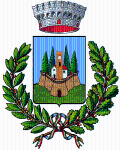Descrizione
Monumento piramidale che commemora la battaglia di Monteaperti e che sorge, adornato da secolari cipressi, sulla sommità del colle già da epoca romantica in luogo dell'antico castello dell'XI secolo di proprietà della famiglia dei Berardenghi.
La battaglia di Monteaperti fu combattuta nei territori circostanti al cippo, il 4 settembre 1260, tra le truppe ghibelline capeggiate da Siena e quelle guelfe capeggiate da Firenze.
Dopo alterne fasi della battaglia, verso il pomeriggio partì un contrattacco dei ghibellino-senesi: è in questa fase che si verificò l'episodio di Bocca degli Abati. Questi, seppure al fianco dei guelfi, era in realtà di parte ghibellina. Alla vista del contrattacco senese, si avvicinò al portastendardo fiorentino e gli tranciò di netto la mano che reggeva l'insegna. Questo causò un notevole sconcerto tra le fila guelfe.
Oltre a questo episodio, in questa fase dalle file ghibelline si alzò l'invocazione a San Giorgio, segnale per la prima divisione, che attaccò i fiorentini alle spalle. I ghibellini si lanciarono all'inseguimento e iniziarono "lo strazio e 'l grande scempio che fece l'Arbia colorata in rosso" (Dante, Divina Commedia, Inferno, Canto X, 85) durato fino all'arrivo della notte. Si calcola che le perdite siano ammontate a diecimila morti e quindicimila prigionieri in campo guelfo, di cui 2500 e 1500 fiorentini, e 600 morti e 400 feriti in campo ghibellino.
La vittoria dei Senesi e dei loro alleati segnò il dominio della fazione ghibellina sulla Toscana, con ripercussioni anche sui precari equilibri del resto d'Italia e d'Europa segnando di fatto il ruolo predominante della Repubblica di Siena sullo scenario politico ed economico dell'epoca.
Ogni anno per ricordare la storica Battaglia il Comitato Monteaperti Passato e Presente organizza nella notte del 4 settembre la Fiaccolata al Cippo di Monteaperti. La Fiaccolata parte dall'Acqua Borra e costeggia il torrente Malena, affluente dell'Arbia, percorrendo il campo della Battaglia fino a raggiungere il Cippo.
English version:
The pyramidal monument commemorating the battle of Monteaperti, adorned by ancient cypress trees, stands atop a hill that was the site of an old 11th-century castle owned by the Berardenghi family.
The battle of Monteaperti was fought in the area around the stone on September 4, 1260, between Ghibelline troops of Siena and the Florentine Guelphs.
After various phases of the battle, a Ghibelline-Sienese counterattack was launched in the afternoon, during which the Bocca degli Abati episode took place: this fellow, although fighting with the Guelphs, was actually on the Ghibelline side. Seeing the Sienese counterattack, he approached the Florentine standard bearer and sliced off the hand holding the emblem, causing considerable shock among the Guelph rank and file.
In addition to this episode, during this phase the Ghibelline troops began to invoke Saint George, a signal to the first division, which attached the Florentines from behind. The Ghibellines gave chase and so began “The carnage, the great bloodshed
that stained the waters of the Arbia red (Dante, Divina Commedia, Inferno, Canto X, 85) which lasted until nightfall. Losses have been calculated amounting to ten-thousand dead and fifteen-thousand prisoners on the Guelph side, of which 2500 and 1500 were Florentines, and 600 dead and 400 wounded on the Ghibelline side.
The victory of the Sienese and their allies impacted the Ghibelline domination over Tuscany, with repercussions for the precarious balance of power in the rest of Italy and Europe, effectively establishing the predominant role of the Republic of Siena in the political and economic scenario of the time.
Every year on September 4, in memory of the history Battle, the Monteaperti Past and Present Committee organizes a torchlit procession at the Monument of Monteaperti. The procession begins at Acqua Borra and follows the bank of Malena Creek, an affluent of the Arbia, crossing the battlefield and ending at the Monument.
Modalità d'accesso
accesso libero
Indirizzo
Punti di contatto
Ultimo aggiornamento: 4 marzo 2024, 12:55

